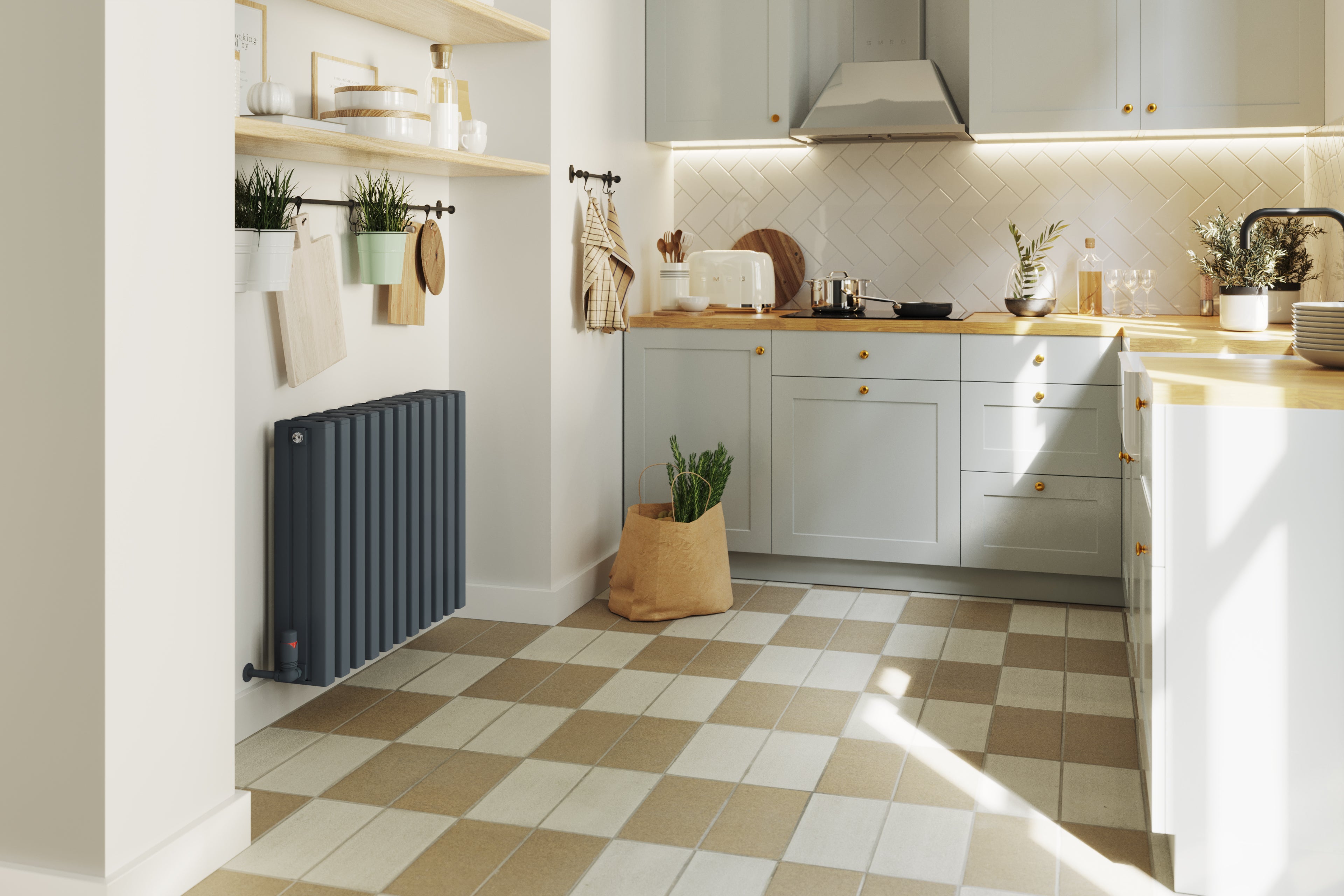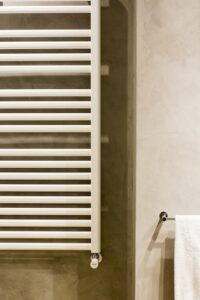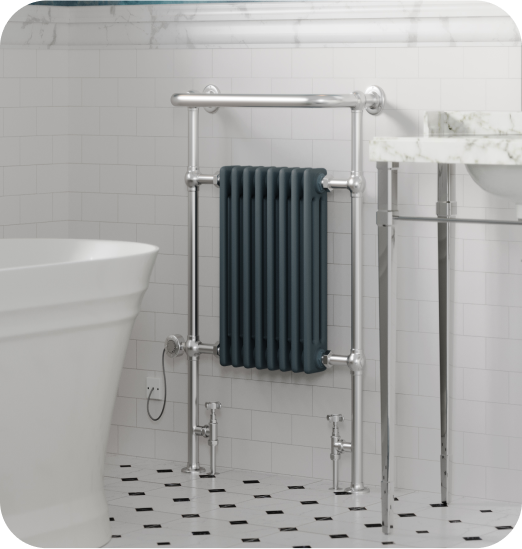There is a lot of bad advice in this area. Some will say that you simply turn your boiler down based on the “heating system” in place, whether that be a heat pump, condensing boiler or an older boiler etc. Sadly, it's not that simple because it actually depends on your entire setup. The most important feature is - do you have a hot water cylinder (hot water tank)? The limited advice out there that does pick up on the importance of looking at the whole system, can actually result in increased heating bills - the opposite of what we are trying to achieve here! In order to change these settings on your system we need to know how energy works at a very basic level, and this is exactly what the other advice fails to understand and consider. We have an
Energy Movement Blog, which is good to familiarise yourself with, but we will recap some of that in this area. In the world of heating, there is something called Weather Compensation, this is the process of balancing the external weather temperature and our desired internal room temperature to get the required heat output for our radiators. As a calculation, this is: X (Internal room temperature) - Y (External temperature) = Heat Output Requirement. This external temperature (Y) is also known as the Winter Design Temperature and this degree value changes depending on your location within the UK. If a summer temperature was used in this calculation, come December, we would find you on the sofa, fluffy pyjamas, jumper, socks, slippers, blanket and all. So, to prevent cold fingers and toes, a winter temperature is used. Generally speaking though, the Winter design temperature used is often a lot lower (in degrees) than what the real-life outdoor temperature will actually be for most of the winter in your location. What this means, is that to compensate for these short spells of colder external temperatures, your boiler temperature is set higher than it needs to be for the milder winter and rest of the year - costing you money. As an example, we want our room to be 20°C (X), in the winter the external temperature may sometimes drop to -1°C (Y), which means our room needs an output of 500 Watts of energy to maintain our cosy 20°C. As shown in the table below (our example is highlighted in yellow), as the external temperature gets warmer, our room heat output requirement decreases - less energy needed = boiler temp reduction = money saved!
| Internal Comfort Temperature |
External Temperature |
Temperature Difference |
Room Energy Requirement (Watts) |
| 20 |
20 |
0 |
0 |
| 20 |
19 |
1 |
24 |
| 20 |
18 |
2 |
48 |
| 20 |
17 |
3 |
71 |
| 20 |
16 |
4 |
95 |
| 20 |
15 |
5 |
119 |
| 20 |
14 |
6 |
143 |
| 20 |
13 |
7 |
167 |
| 20 |
12 |
8 |
190 |
| 20 |
11 |
9 |
214 |
| 20 |
10 |
10 |
238 |
| 20 |
9 |
11 |
262 |
| 20 |
8 |
12 |
286 |
| 20 |
7 |
13 |
310 |
| 20 |
6 |
14 |
333 |
| 20 |
5 |
15 |
357 |
| 20 |
4 |
16 |
381 |
| 20 |
3 |
17 |
405 |
| 20 |
2 |
18 |
429 |
| 20 |
1 |
19 |
452 |
| 20 |
0 |
20 |
476 |
| 20 |
-1 |
21 |
500 |
| 20 |
-2 |
22 |
524 |
| 20 |
-3 |
23 |
548 |
| 20 |
-4 |
24 |
571 |
| 20 |
-5 |
25 |
595 |
But we need to be safe and careful. There are lots of valid arguments for not dropping your boiler temperature as well as arguments in favour of dropping it. We must make sure we do what is right for our own individual situations. In the rest of this blog, we will try to help you do just that, by explaining some other parts of your heating system that need to be considered before you change the temperature on your boiler.
Do you have a hot water cylinder?
We need to be careful here as sometimes this can be a bit tricky. It is quite easy to identify an external hot water cylinder (sometimes called a hot water tank). Sometimes your tank connects to the central heating system, sometimes it is electric and standalone. Combi boilers are where it gets a bit tricky. Some combi boilers in the home will likely provide direct hot water, which means that only a small pre-heat vessel of water is stored so that you get instant hot water without waiting for the boiler to heat up new water. However, some Combi boilers may visually look like a boiler, but actually have a significantly larger storage vessel for pre-heat or have a small tank built in. These are called Combi Storage Boilers and as far as the way you use your heating is concerned, these are the same as if you had a separate tank. So it is always best to look up the guide for your boiler model and check that it doesn’t have a built-in storage tank and that the storage vessel (for pre-heat mode) isn’t too large. To best guide you in lowering temperatures, we have to first ask, Do you have a hot water cylinder connected to your gas boiler? We have 3 obvious answers:
We will cover all 3 so you get some benefit, but the answer for Yes and I don’t know are the same.
I have a hot water cylinder on my central heating system or don’t know
If you don’t know, then we have to assume for safety reasons that you have one but you should find out. Please read all of this carefully. There is a lot of bad advice online that is putting both your health and wallet at risk. The main thing to know is that the boiler temperature you set will be the same one used for hot water and central heating. To kill legionella (a type of bacteria), you would generally heat the water in your cylinder to 60°Cor higher. Whether or not your cylinder is set to 60°C, doesn't necessarily mean all the water in the cylinder is at 60°C. So, you may want it a bit higher, especially if you have health considerations. This advice comes from health and safety guidelines, not the radiator or central heating industry. Now, the bad advice online will tell you to set your boiler temperature to 60°C. However, as well as the potential health implications, this is also a good way to waste money because that temperature is too low. If you have read the
Energy Movement Blog, this might be apparent to you. For those who haven't made it over to that blog yet, we will explain here why 60°C is too low. There is a small pipe inside of your water cylinder which receives hot water, this hot water never touches or mixes with the water held in the cylinder itself. The heat energy from the water in the pipe passes through the pipe and heats up the water held in the cylinder. Similar to the good old days of heating a baby's bottle in a bowl of boiling water, the two liquids don't combine but the heat transfers. Heat energy moves to where it is colder. So, the amount of energy that can move is dependent on the temperature gradient (or the difference between the hot thing and the cold thing). The higher the difference in degrees, the more energy can transfer. Your hot water cylinder will have its own thermostat, this regulates the requests it makes from the boiler. If the thermostat is set to 60°C, then when the water held in the cylinder (for taps, showers etc) gets to 60°C, it tells the boiler it no longer needs hot water. It also turns off the pump feeding it. So, at this point, if your central heating is off, the boiler would turn off. But, if it is on, the boiler may stay on to heat the central heating radiators. The big question is:
What happens if my Boiler is set to 60°C and my Hot Water Cylinder thermostat is 60°C? Best case scenario: it takes several hours/days for your hot water cylinder to get to 60°C. “WHAT?!” I hear your cry. Well, it's all down to how heat energy moves, when the water in the cylinder is, for example, 59.9°C, and the water in the pipe feeding it energy is 60°C, there is very little heat energy (only the energy for 0.1°C) that can transfer, as that is the temperature gradient (difference). In reality, though, heat energy will be lost as the water moves from the boiler to the cylinder, so by the time it gets there it will be less than 60°C anyway. Therefore, if your boiler and cylinder thermostat are both set to the same temperature, your hot water cylinder will always be calling for hot water and the pump will always be on because you will never quite reach that temperature. Hot water cylinders weren't born into existence yesterday, they are designed to be very well insulated so that they hold their heat for long periods of time. The hot water pipe in the cylinder will also hold heat and continue to transfer that energy if the temperature gradient is there. So really, your cylinder should not be requesting for the boiler to send more hot water until someone uses the hot water in the cylinder at the same time that your heating system is programmed to heat the water in the cylinder.
So what should I set it to? As a rule of thumb, the boiler should be 7°C higher than the thermostat setting on the hot water cylinder. This is low enough not to waste energy, but high enough to have a decent energy transfer rate to signal the hot water cylinder to turn off. Some examples: If the cylinder is set to 60°C, set the boiler to 67°C. If the cylinder is set to 62°C, then set the boiler to 69°C. If the cylinder is set to 65°C, then set the boiler to 72°C. We could keep going, but you get the idea. The cylinder setting should always consider your own situation and opinions on safety for legionella, so please do look into that first. All we can advise is that your boiler temperature should be 7°C higher so that you can effectively heat the cylinder to that level. This setup should work effectively for most of the year and around 95% of the winter months. You may need to turn up your boiler on those really cold days if your central heating isn't quite getting you cosy!
Recap
- Check the hot water cylinder thermostat temperature, if you don’t know how to do this, you may need to find the manufacturer's guide.
- The boiler temperature must be at least 7°C higher than the cylinder thermostat temperature.
- This setup is effective for most of the year and most of the winter.
- If the central heating isn't hot enough on the coldest days of the year, turn up the boiler temperature.
- When turning the boiler temperature back down, make sure it's at least 7°C higher than the cylinder thermostat temperature.
Job done! As far as user-friendliness goes, getting your maximum savings is pretty simple with this method. During the warmer months when you are using hot water only, having your cylinder temperature lowered to a workable amount (not below 60°C) saves more all year round.
I don't have a hot water cylinder on my central heating system
In this case, you either have a separate electric cylinder or you have DHW (direct hot water) and there are two temperature settings on your boiler, one for central heating and one for hot water. Let's talk hot water first!
Hot Water If you have a separate electric cylinder, check the time of day settings – make sure this uses the economy times of day for your provider. If you have Direct Hot water – for safety these settings are hugely lifestyle dependent, as well as this some combi boilers (type of boiler that provides direct hot water) can sometimes have a cylinder built in, and the cylinder size can vary quite a lot from the very small to the very large. If that is the case, you would need to treat it as though you have a hot water cylinder and follow the guidance in the previous section. Anything above 43°C is considered dangerous (too hot) at the tap. However, 20-45°C is good breeding temperature for legionella (a type of bacteria). So water sitting in pipes after showers/baths etc. can likely breed legionella. Depending on your lifestyle, this could get really dangerous. For example, if you go to the gym Monday-Friday, use the facilities there and live alone - so no one is really using the shower/bath during the week. Come the weekend you take a shower and in the following days you are in hospital 😊. It really is that simple, scary right? To be more on the safe side, you will need your hot water distributed at quite a high temperature, as it will sit in pipes. But, even if you do 50-55°C, your lifestyle will determine how safe that is. So our advice here is
don’t get your advice from a Radiator Salesman. While we really get the physics of heating, we just don't know all the ins and outs of water safety. So, speak to an expert on water safety - you can always try the HSE website. HSE gives a rule of thumb for storage, but there will also be a bunch of really important caveats around individual scenarios and health considerations.
Central Heating There is a lot of advice like “drop to 55°C flow temp” circulating the internet. You can do it, no issues. However, there are valid concerns that come up: What about pump usage, what about temperature difference on the flow and return and does your heating system have a minimum requirement to maintain its warranty? We have prepared a small app for you to help with manual weather compensation. It is still in phase 1, which gives you a guide. Phase 2 will calculate how a small part of water works on your system for energy distribution as it travels around. Pretty clever stuff, if we do say so ourselves! But, to be fair to science, nothing new here - We are basically simplifying the algorithms so anyone can do it. Sadly, this app isn't quite ready for you yet. But we don't want to leave you hanging, so as a gut shot rule that applies to everyone: If your central heating boiler temperature is 70°C or above and that’s how it was set by the engineer, then you can drop that by 10°C without too much impact on flow and return temperature and without worrying too much about boiler manufacturer requirements. They are designed to have some flexibility. You can then measure the flow and return - sometimes the boiler will tell you, sometimes you do this on a radiator with a temperature gauge or pipe thermostats - but you need to do it after your central heating has been on a while and on a reasonably cold day, any day where the outside temperature is below 10°C should be enough to measure this. Once you've measured this, check it against the boiler's user and operations guides. If the central heating then doesn’t perform well enough during the colder parts of winter, you can raise the temperature. To get more out of your boiler and save those extra pennies, see our
Weather Compensation guide!
Are there any property type considerations?
Ultimately, the newer the building, the lower the potential temperature you can drop to. Older buildings are going to fluctuate more, so you will have to reset and raise/lower the boiler temperature more often to compensate. But, we cover that more in our weather compensation app.
Is there any tech that can help with this?
Yes, there is, we don’t sell it, but you can look for Weather Compensation and Boiler Modulation. You may need to speak to an industry professional, the good thing is if they set this up for you, they should also take care of the considerations in this blog.









